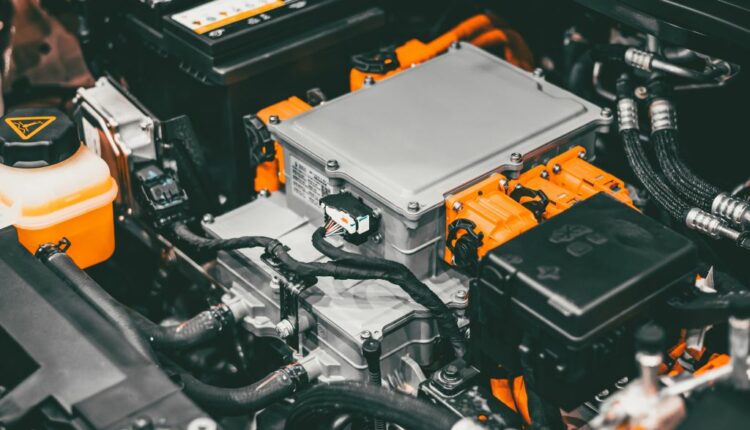The Sustainability of Electric Vehicle Motors
Electric vehicles (EVs) are vital for decarbonizing the transport sector. However, the materials used within them often come under scrutiny regarding their sustainability. Objectively quantifying sustainability is difficult due to its dependence on multiple factors, but certain technologies, materials, and practices can certainly be more or less sustainable than others.
As a vital part of an EV’s drivetrain, considering the sustainability of electric motor designs is also important when looking at the sustainable nature of a vehicle. IDTechEx’s report, “Electric Motors for Electric Vehicles 2025-2035: Technologies, Materials, Markets, and Forecasts”, predicts the need for over 160 million electric motors annually by 2035. This article aims to discuss some of the critical factors and tradeoffs to be made for electric motor design if sustainability is the ultimate goal.
The Impact of Material Choice
In the vast majority of cases, the materials used in the stator of electric motors in the EV market are very similar, with steel laminates and copper windings. The primary difference comes down to the rotor materials. Rare earth permanent magnet motors make up most of the market, with IDTechEx finding they had an 85% market share in electric cars for 2023.
Of the materials considered for electric motors (steel, aluminium, copper) per kg, rare earth has the most significant environmental impact when considering the potential for ozone depletion, global warming, acidification, eutrophication, and photochemical ozone creation.
While they are a relatively small part of the motor (less than 1-2kg), rare earth-containing motors tend to have a more significant environmental impact per kW of power compared to the rare earth-free alternatives, even though magnet-free motors typically require more substantial amounts of other materials like copper. However, magnet-free motors may require other manufacturing steps that could increase energy consumption.

Increasing Power Density and Efficiency to Improve Sustainability
A more efficient motor means less energy is wasted driving the vehicle. This means less electricity from the grid is used, which, depending on the grid, could significantly reduce CO2 output. Additionally, a more efficient motor means a smaller battery could be used to achieve the same vehicle range, reducing material use and the environmental impact of the battery system.
The other aspect is power density. A more power-dense motor will use fewer materials to achieve the same power output. Taking an extreme example of high power density with an axial flux motor, players interviewed by IDTechEx have claimed a power of 190kW can be achieved with less than 1.2kg of magnets or ~6.3 grams/kW. Compare this to a typical modern radial flux motor at around 10 grams/kW.
Do We Need More Motors?
IDTechEx’s research has found that the average number of motors used per BEV in 2023 was 13% higher than in 2015, as more vehicles are deployed with dual, tri, and quad motor variants. Of course, having more motors in a car will increase material utilization for the motor and all the associated electronics and thermal management components.
One could ask how many consumers need more than one motor. It is indeed a nice luxury to have, and automakers often prefer selling these higher-specification vehicles that command a higher profit margin. This reduces the car’s sustainability.
However, if it means more people are willing to purchase a BEV, then this can be seen as a step in the right direction for the environment in general. IDTechEx believes that a critical step for reinvigorating growth in the EV market will be the availability of low-cost models (especially in Europe) that will likely command a single-motor solution to keep costs down.
How Large a Factor is Sustainability?
Sustainability is a core goal of most modern businesses, with many having net-zero goals in the not-too-distant future and entire departments dedicated to reducing the company’s environmental impact. As automakers try to make more profitable EVs, which will be a significant factor in the decarbonization of road transport, the sustainability of EV components will often fall behind factors such as performance, efficiency, and price.
Additionally, more scrutiny is usually given to the battery materials, and rightly so, given the quantities used compared to the motors. This is reflected in early regulations, such as the battery passport in Europe, which requires the battery’s CO2 footprint to be reported. Most of the initial sustainability focus will be in this area, but the motor could prove a significant route to improving vehicle sustainability in the future.
IDTechEx’s report, “Electric Motors for Electric Vehicles 2025-2035: Technologies, Materials, Markets, and Forecasts”, analyses the current technology and materials landscape for electric motors in EVs and forecasts the future trends and demands for the next ten years.
IDTechEx estimates that over 160 million electric motors will be required for the EV market in 2035, with approximately 30% of the automotive market using rare earth-free technologies in the same year.


Comments are closed.